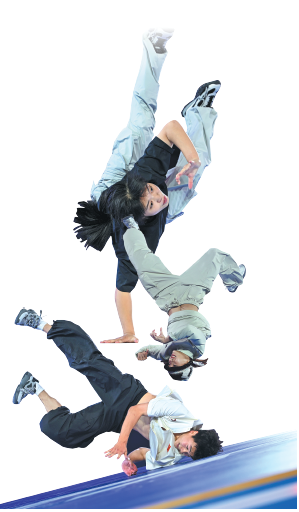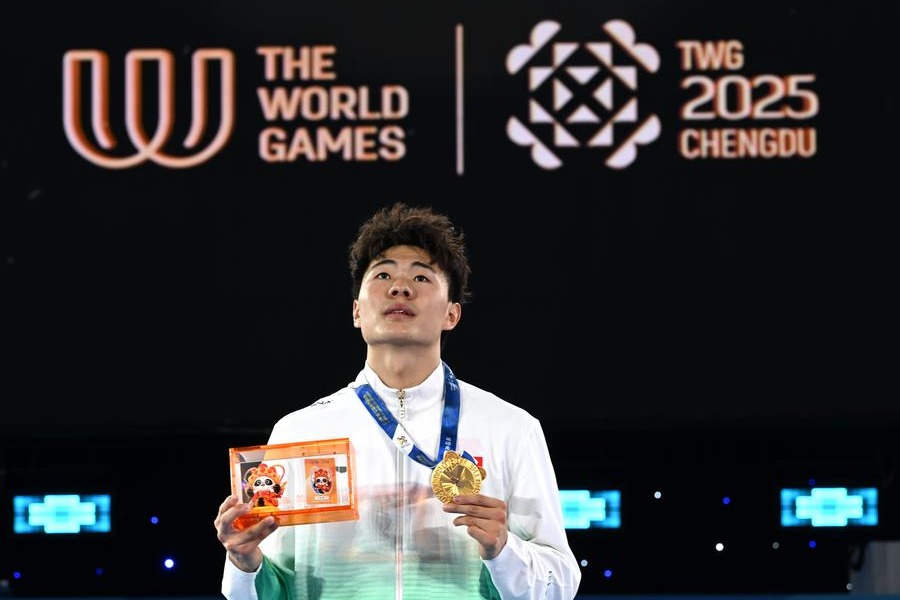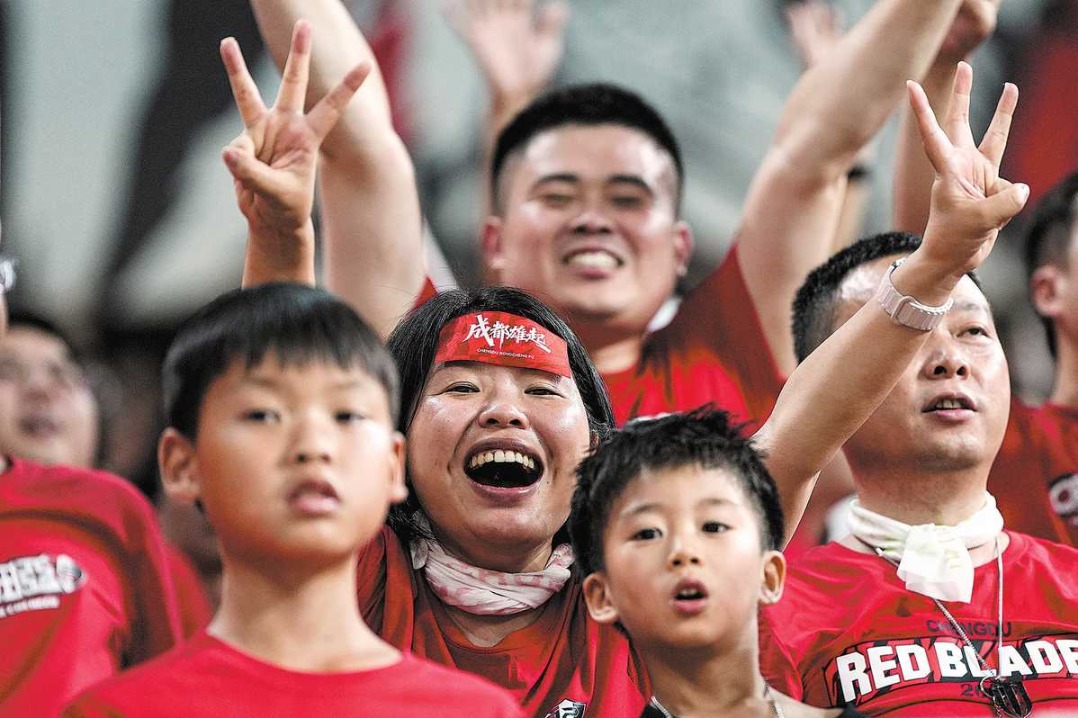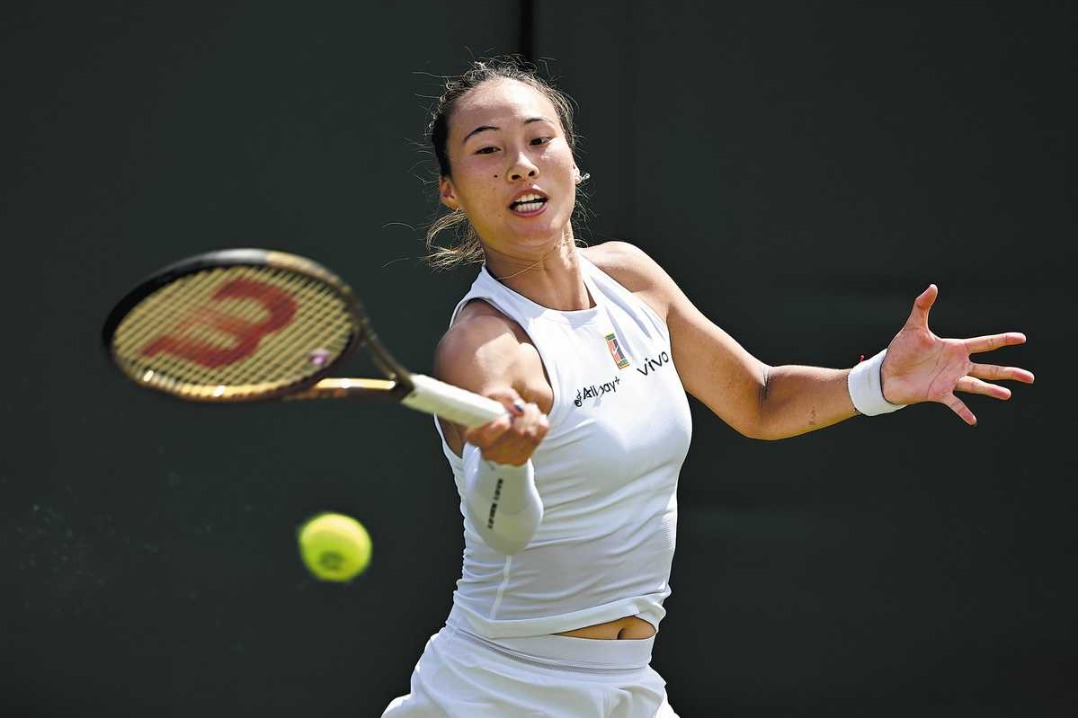From unknown to unstoppable
China's dancesport revolution continues apace


The roar of the crowd at Chengbei Gymnasium said it all.
Nearly every spectator remained standing through both finals, witnessing a day of glory for Chinese breaking.
The host nation struck gold twice on its home floor at the World Games in Chengdu on Sunday, as Qi Xiangyu (B-Boy Lithe-ing) and Zeng Yingying (B-Girl Royal) captured the men's and women's titles, respectively.
The double triumph meant more than just medals, it signaled China's arrival as a leading force in world breaking — no longer an underdog, but a champion displaying both dynamism and poise.
First steps
Fresh off the announcement that it would feature at the Paris Olympics, breaking made its World Games debut in Birmingham, Alabama, three years ago. China sent only two B-Girls. Liu Qingyi, better known as B-Girl 671, finished fourth — a result modest on paper, but one that hinted at greater things.
"When I started three years ago, Chinese breaking was almost unknown internationally," recalled Mounir Biba, the head coach of the Chinese team.
Born in 1986, Biba is a legendary French B-boy, a Red Bull BC One champion and one of the pioneers that pushed breaking toward sporting recognition. He took charge of China's national team in early 2022. Birmingham was the first major test under his guidance.
Liu was the trailblazer. After Birmingham, she followed Biba and the national squad to Europe for months of training and tournaments. For the first time, a Chinese B-Girl was fully immersed in the global breaking scene.
Her talent quickly turned into success. In 2022, Liu won the Outbreak event in Slovakia and the World Battle in Portugal. She showed that a female dancer could master the power moves and airflares that were once only the preserve of B-Boys.
"Liu Qingyi's rise has changed the technical landscape for women worldwide," said Yin Guochen, president of the Chinese DanceSport Federation (CDSF). Many young B-Girls soon adopted her dance style.
That same year, she took silver at the world championships. In 2023, she stood atop the Asian Games podium, securing direct qualification for the Paris Olympics. Last summer, she returned home from the French capital with a bronze medal.
On the men's side, the breakthrough came a little later. Lithe-ing claimed bronze at the Asian Games and later booked his ticket to Paris. Wang Ruimiao (B-Boy MonkeyZ) delivered another milestone with a world championship bronze in 2024, China's first on the men's stage.
More recently, Zeng surged into the elite, giving China another world-class B-Girl. That is why in Chengdu, the women's final turned into an all-Chinese showdown — a scene few could have imagined just three years ago.
"In a World Games final, both finalists are wearing the Chinese flag — three years ago, nobody would have believed it," Biba said. "Now, everyone is watching China."
Well-drilled spontaneity
When Liu stunned the crowd by taking her first international crown at the Outbreak event in Slovakia in 2022, Portuguese breaking legend Max Oliveira grabbed the mic on stage. "From now on, China is on the map," he proclaimed.
Three years later in Chengdu, Oliveira looked back at that night with a smile.
"What they have built is now a model for the world," he said.
The rise was not by chance. With Olympic inclusion, breaking in China shifted from spontaneous training to a more systematic approach, the idea that dancers with discipline and structure — not just free improvisation — could win titles.
It echoed Biba's philosophy.
The French coach often uses the word "arthlete" — a portmanteau that reminds us that breakers are both "athletes" and "artists". For him, artistry needs freedom, but excellence requires routines, schedules and intensity.
"This was exactly why we chose to work with Mounir," said Yin. "He brought a vision where creativity and discipline reinforce each other, and we knew this was what Chinese breaking needed to reach a higher level. Breaking came from the United States, with Europe and Japan the current powerhouses. China is a latecomer, and we have to learn from the outside world before we can contribute our own style."
With philosophy aligned, the system took shape. Starting in 2022, a Chinese training camp was established in Beauvais, a town north of Paris. There, Chinese B-Boys and B-Girls trained intensively while traveling across Europe to test themselves in all kinds of underground battles.
"The training in Europe gave me perspective," said Chinese B-Boy Lithe-ing. "Every week, we faced legends. You lose, you learn, you adjust. That's how you grow."
At home, the CDSF built the foundation. A national breaking league was launched, drawing dancers from every province and providing a platform for the likes of Royal and MonkeyZ to rise.
Those who excelled earned invitations to training camps based in Nanjing, where a local sports company works with the CDSF to build the national program — overseeing daily training, talent scouting and even commercial development for the national team.
Even teenagers found their battlefield in youth leagues. For them, the pathway was visible: from local crews, to national leagues, to camps, and then, to the world.
"It feels like a fast lane. If you put in the work, the chance will come," said Li Houhua (B-Boy Jason), a 15-year-old who won the Asian Youth Championships in Shanghai in early June.
China's top B-Boys and B-Girls are shining on the international stage, showing the younger generations that they, too, can reach the summit. At the same time, the surge of youth participation is expanding the talent pool, giving the scene fresh momentum.
From stage to legacy
The breaking world was still digesting the discipline's electrifying Olympic debut in Paris when the news broke: it would not return for Los Angeles 2028.
The roller-coaster journey within the Olympic program raised questions — would China's breaking momentum be shaken?
In Chengdu, the answer was presented. Chinese breakers produced their best-ever showing at a global multisports event, taking two golds and one silver. The message was clear: China's breaking would not stop here.
"It's a breakthrough, but not the finish line," said Yin. "The goal is still far ahead; our vision is 2030. By then, we want to be not just competitive, but the world leader."
How to get there? Yin and Biba agreed on the path: learn from the world, and strengthen it with a Chinese style. The idea is two-fold — to absorb global techniques through constant overseas training and competitions, and to blend them with elements of Chinese culture, aesthetics and physical training.
"On one hand, our dancers must keep their technique and difficulty at the world's top level. But, gradually, they also need to add their own flavor, their own style," said Biba.
"Breaking is like a melting pot — you can see cultural elements from everywhere. When I was learning, I even drew inspiration from Japanese cartoons. China has such a rich culture. We hope young dancers can think more, absorb broadly, and grow into styles that truly reflect themselves."
Globally, the past three to four years have seen breaking reach unprecedented heights, fueled by its Olympic debut. Standards were pushed higher, athletes trained harder, and the art grew sharper under the Games' spotlight.
For Chinese breaking, the Olympic campaign has left a lasting legacy: not just a generation of world-class dancers, but also a more solid structure, a stronger competition framework and — above all — the belief that they belong among the world's elite.
Yet the Olympics were never breaking's original soil. The Games offered a grand stage, dazzling and historic, but for B-Boys and B-Girls, the purpose was never only to compete for medals.
At its core, breaking is about dancing — expression, rhythm and spirit.
From that perspective, the stage has always been there.
Xinhua
Most Popular
- From unknown to unstoppable
- China puts emphasis on youth development
- Mbappe penalty helps get Madrid off to a winning start
- Pacers reward coach Carlisle with multiyear contract extension
- Mixed doubles gets mixed reaction
- Sinner retires sick, handing Cincy title to Alcaraz





























